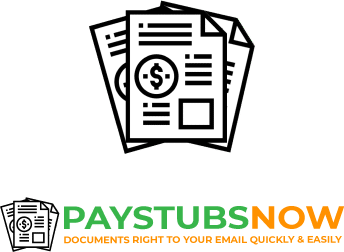6 steps to create your employee development plan
The training and retraining of employees can be pretty challenging. Even more, replacing an employee can be a problematic undertaking for most entrepreneurs. As a result, most business owners prefer to retain their less experienced employees to help them grow within the company.
But, as the business world continues to advance and technology keeps evolving, are there strategies for you to skill up your workers? Creating an effective employees plan is a sure way to have your enterprise meet market demand. Therefore, an employee development plan will save your company tons of dollars by refurbishing its existing talent.
Suppose you are about to expand your business or form an alliance with more prominent corporations. And you need to boost the skill sets of your workers. This article will discuss how to create an employee growth plan; keep reading to learn more.
What is an employee development plan?

An employee development plan is also known as an employee growth plan. In a nutshell, it is a plan or strategy to help existing workers in an enterprise improve their skills. The goal is to prevent the company from going through a completely new hiring process by upgrading the skill set of current employees through an effective training program.
Most of the time, this skill is achieved by training and retraining engaged employees with potential. Essentially, it is a vital tool for career development and professional growth, boosting company productivity by improving current employees' skills and career paths. A good employee development plan is a laid-out strategy to enable a company to meet its ideal business goals. And address development needs.
The rationale behind an employee growth plan is to boost company productivity by enhancing workers' output and helping them achieve their career aspirations. Occasionally, but not always, this includes leadership training as part of comprehensive leadership development plans. It relies on the person's skills, interests, and the requirements of your company.
Therefore, you cannot adopt a homogeneous strategy and use the same effective employee development plans across your entire firm. We'll go over the fundamental ideas underlying effective professional growth, and you may decide how to apply them most effectively to the people and situations in your life. However, let's first talk about why the effort is worthwhile.
What Are the Different Kinds of Professional Development Plans?
There are various types of professional development plans you can implement based on your employees' needs and goals. Among the most common are:
-
Courses in continuing education: This type of development plan may be appropriate for those who want to pursue a higher degree or certification to align with their future careers. Tuition reimbursement could be part of such a professional development plan.
-
Increased duties and responsibilities: An employee may be required to learn and implement new technology, systems, and processes, as well as train team members on them. Remaining competitive in the field may entail learning about new developments and industry trends. Employees may also take on more difficult responsibilities in order to advance in their positions.
-
Participation in professional organizations and seminars: This type of plan may include attending conferences and workshops hosted by partner organizations, serving on a board of directors, or coordinating events sponsored by the organization. These events should provide employees with opportunities to network and become more involved in their organization and industry.
Why do you need an employee development plan?
A well-established employee development plan sets up an enterprise for success through improved output that will generate goodwill for the company and enhance job satisfaction. As a result, it becomes a worthwhile investment for the business owner to improve employee retention. To retain top talent. Suppose you wonder if creating an employee development plan is the right thing for your business. Here are a few benefits of an employee growth plan.
-
A well-crafted plan Boosts employee self-confidence.
-
It develops latent employee abilities, improves employee satisfaction, and enhances their presentation skills, which are a crucial aspect of professional growth.
-
Workers' output is enhanced for company profitability
-
It sets the pace for company SMART goals and how to achieve them through effective employee development plans that align with the company's objectives.
-
It increases the employee retention capacity of a company to reduce unnecessary hiring.
Examples of an employee development plan

Employee growth plans can take several forms. These forms depend on the nature and level of the company and company needs, goals, and objectives. Below are a few forms through which an employee growth plan can exist.
Continuing education programs
Continuing education programs as a development plan are excellent for people who want to acquire higher qualifications. Perhaps an advanced degree or certificate to qualify for a promotion. Sometimes, the company pays for the tuition, recognizing the key benefits of investing in the employee's development and personal growth. Other times, the employee will pay for the tuition, and later, the company reimburses the worker.
On-the-job training
This type of development plan does not require the worker to undertake special courses. Instead, the worker obtains hands-on training while on the job, bridging the skills gap and enhancing their personal lives. Essentially, the employee in question gets to have extra responsibility added to the one at hand. In this case, the ideal candidate for an added responsibility is those who show promise of development. Usually, such added responsibility as a strategy to train and develop the worker comes with extra pay.
Professional body activities
This form of the development plan is usually peculiar to those belonging to a professional body. Examples include medical personnel or health workers, engineers, lawyers, and those working in the financial and banking sectors. Depending on the company's capacity, participation in professional body activities can be sponsored by the company or by individual attendees as part of an informal employee development plan. Other times, the company might provide participation subsidies for attendees.
Six steps to creating an employee development plan

Every plan needs to be laid down with steps for proper execution. Therefore, every employee growth plan requires steps to be executed easily and effectively. Here are six steps to effectively create an employee development plan.
1. Take note of your company's needs.
Every company has its development goals. And as an entrepreneur, you should be able to pinpoint exactly what those needs are to develop effective employee development plans. Your company's needs should always be in line with the company's goals and objectives. You've put in a lot of effort to create an employee development strategy.
How will you know if it's working? Take the time to evaluate the success of your efforts and devise a strategy for dealing with any challenges that occur. Meet with staff on a frequent basis to check how things are going and to obtain their feedback on what they would like more (or less) of. Determine the extent to which the employee development process has affected the company and the workers.
Make sure your organization has a person or team dedicated to monitoring the performance of the employee development strategy. If your company is small and cannot afford a full-time employee development professional, HR professionals can assist, as can managers, when they report on productivity levels or team wins.
2. Analyze the employee in question
Choosing to expand the company through investing in staff for their career development goals is another form of investment. Therefore, It is essential to be careful to ensure that the chosen staff is worth it. The whole essence of training programs is to maximize output, improve employee performance, and boost employee engagement.
3. Decide on an action plan
Essentially, a successful employee development plan is an action plan. However, what we mean here is to craft out a sequence of execution. Would your growth plan be short-term, midterm, or long-term, addressing the employee's career goals? Addressing employees' future roles? These questions will help you figure out what is in line with the company's goals.
The good news about staff development plans is that they don't have to be invented from scratch and can be tailored to the employee's development needs. And can be tailored to the employee's current position. Once you've made the decision to proceed, there are a number of templates available to help you. Employee development plan templates are classified into two types:
-
In the early phases of your organization's approach, consider using an individual employee development plan template. This allows employees to consider their personal career goals and how they might connect with those of your firm.
-
A succession planning template assists your organization in determining where it needs to employ or expand. It also specifies what resources are already available (and if they need to be developed further).
4. Offer relevant opportunities
Because you will be spending some amount of money on employee development, you must be sure to Conduct a thorough skills gap analysis to offer relevant opportunities that address the necessary skills and close the employees' skills gap. Suppose the staff requires some retraining or course, it is essential to ensure that such is relevant to the beneficiary.
5. Review the progress
Investing in both your workers and, by extension, the organization means that you have to assess both individual work and the organization as a whole, keeping in mind the employee's manager’s feedback. The reason is that you want to see to what extent the employee development process has affected both the employee and the company.
6. Figure out opportunities where the new skills are relevant
The goal of acquiring new skills is for organizational and employee development, leading to higher employee satisfaction. Therefore, having created opportunities for retraining your workers, You must ensure that the newly acquired skills are put to good use to further the employee's career goals and track improved performance.
How to incorporate automation as part of your development plan with PaystubsNow, ensuring continuous learning and business growth
As part of your employee development process, include automation by switching to online invoices for your clients. You can also generate online paystubs for your workers and have them get used to doing business digitally. Other automated services on PaystubsNow are 1099 and W-2 forms. All financial documents are sent straight to your email after you create them.

